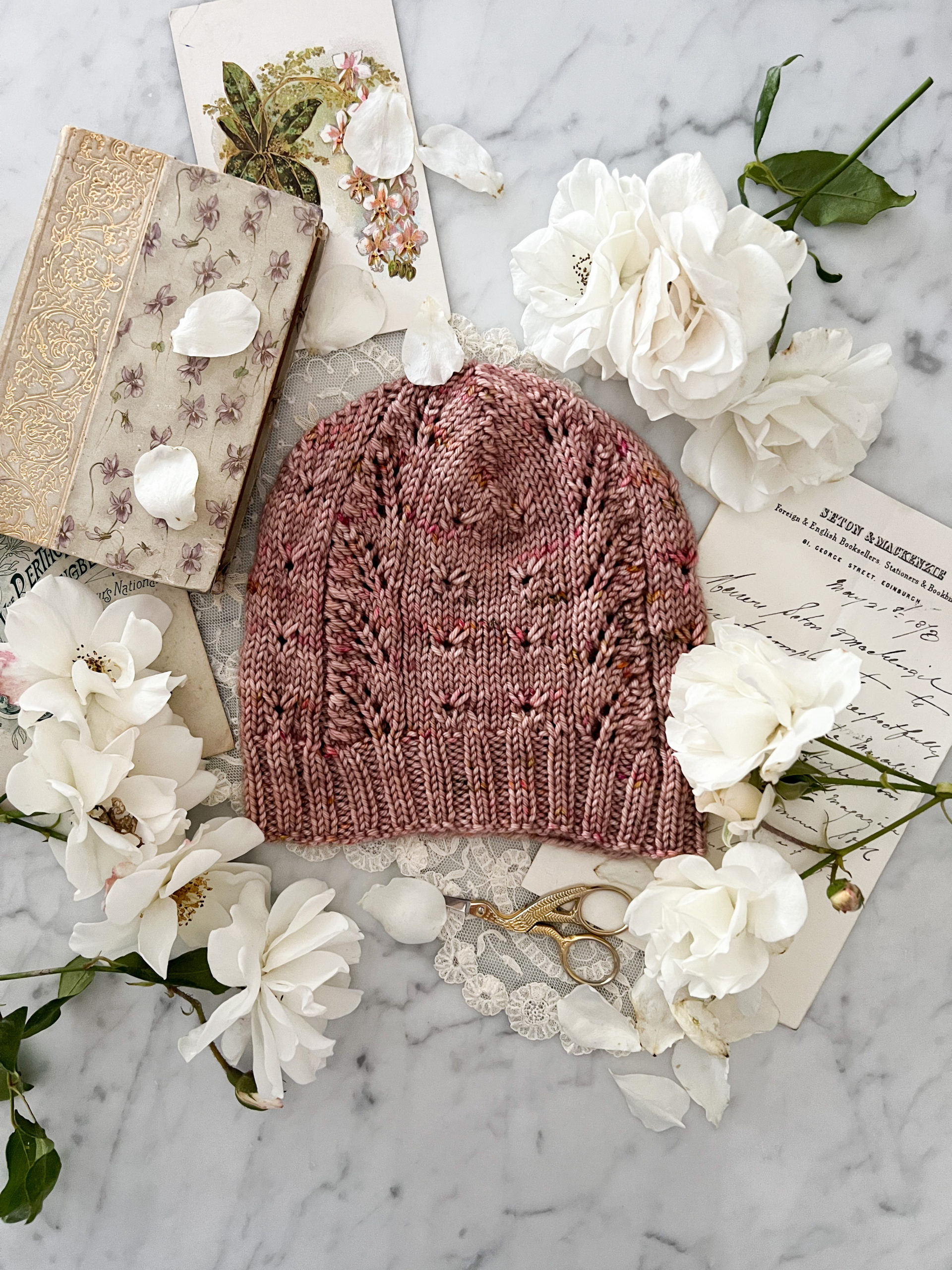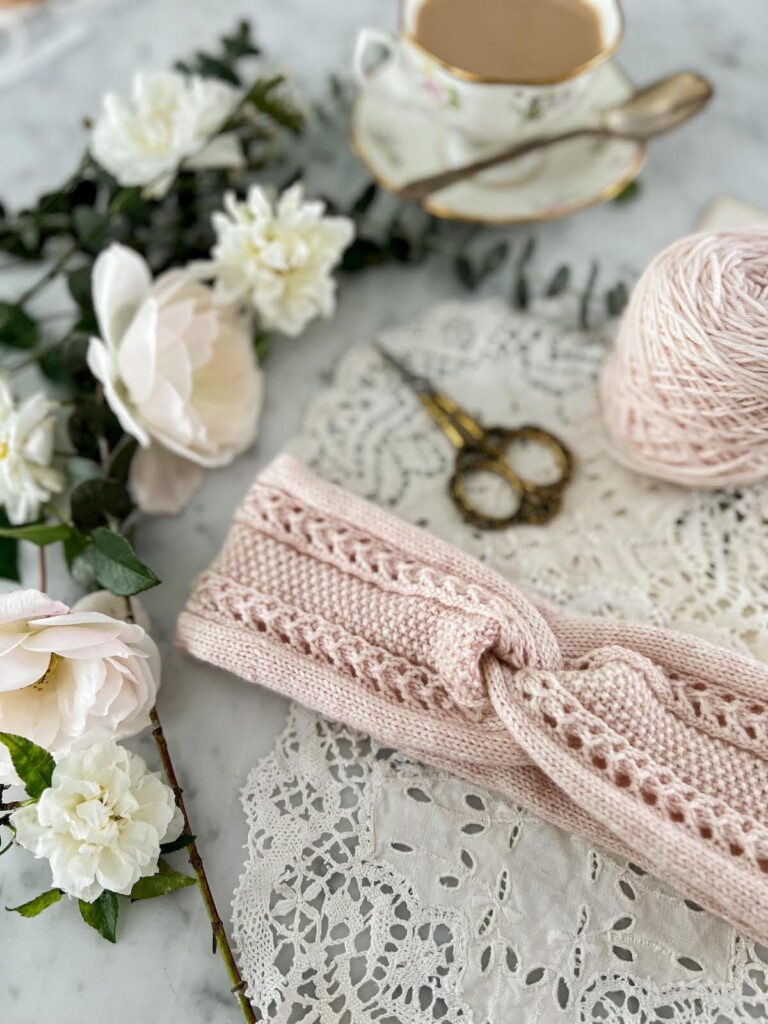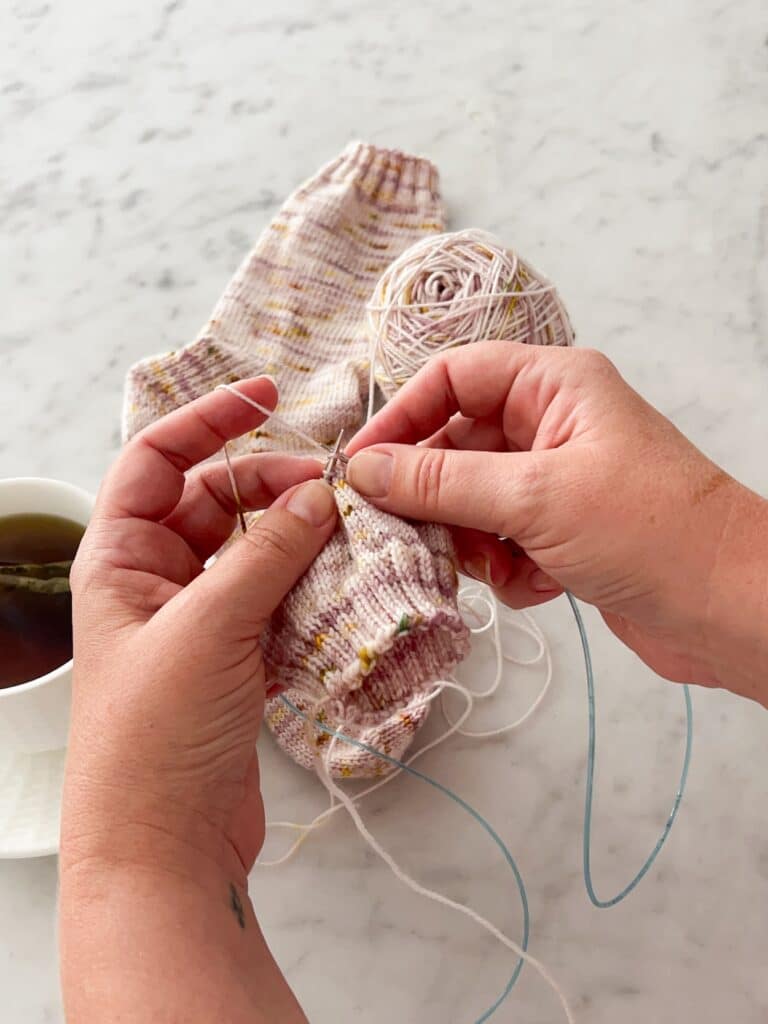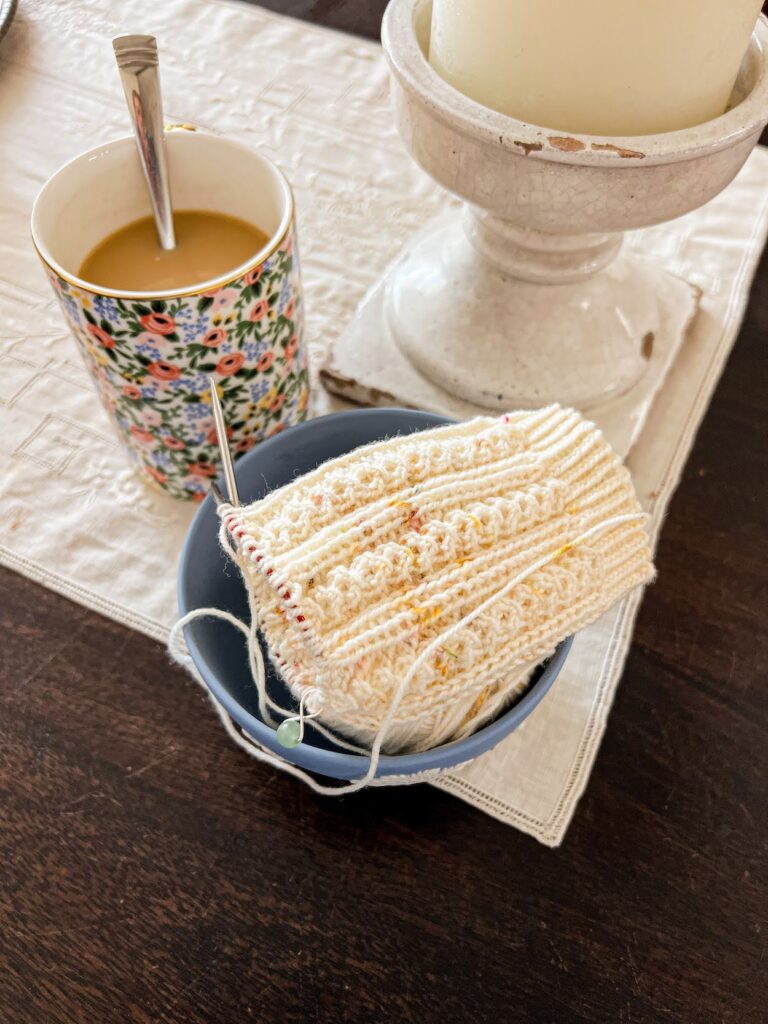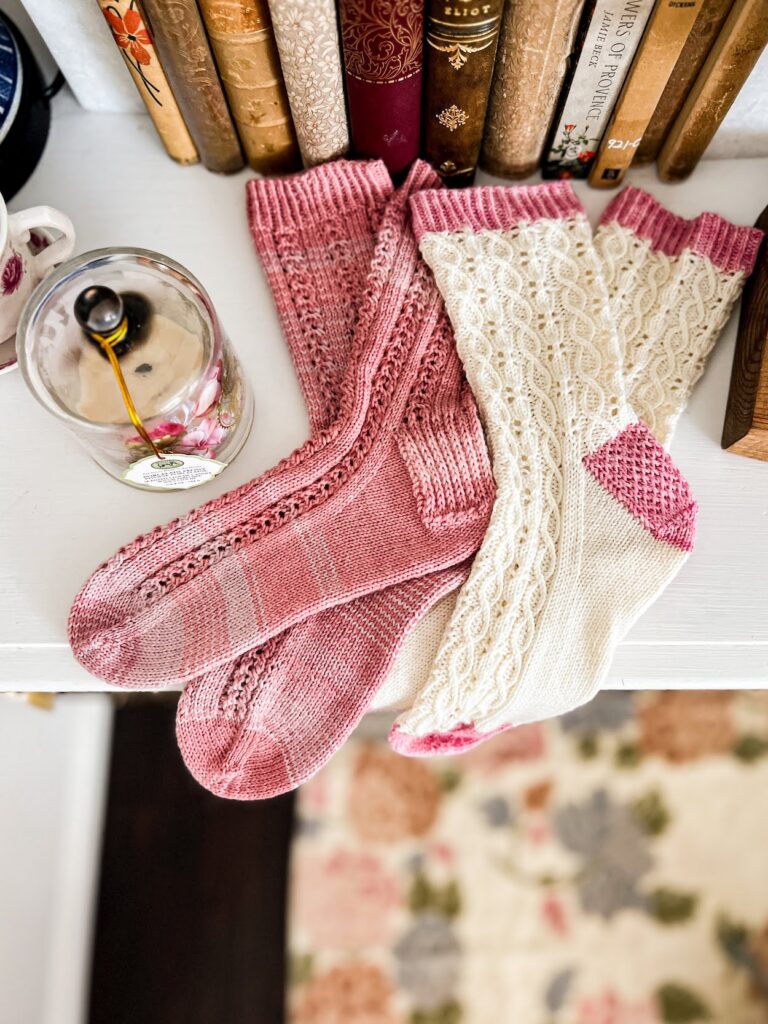About two weeks ago, I found myself in an interesting position. I was knitting some tiny baby socks for a friend when I realized the socks don’t take very long to make.
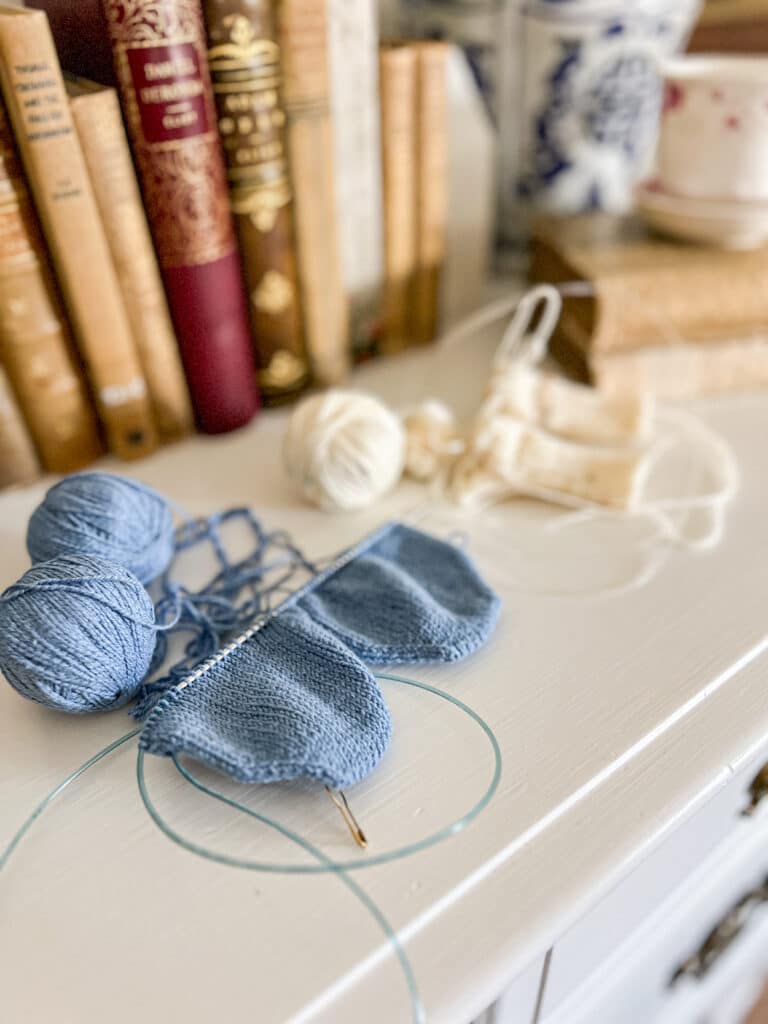
And that meant any mistakes I made wouldn’t require undoing 60 stitches per round, but instead only half that.
This, of course, took my brain on a very exciting series of realizations. Things ended with the conclusion that this was the perfect opportunity to learn to knit socks two at a time. I couldn’t resist.
Now I’m on my second pair of two-at-a-time socks, and I thought it would be fun to document the journey. Here’s what I’ve observed and learned so far.
Part One: Learning to Knit Magic Loop
While there are people who knit two socks simultaneously on two sets of DPNs or two sets of small circular needles, this is a less common practice than knitting two-at-a-time (TAAT) on Magic Loop. Most TAAT knitters that I know are also Magic Loopers.
This makes a certain amount of logical sense. When you’re Magic Looping your socks, you are always alternating socks after each row. This virtually guarantees two identical socks with the same number of rows in each part.
When you knit two socks in parallel using other methods, you could easily knit one sock for much longer than the other without realizing it. In fact, most knitters I know who knit their socks this way tend to do one leg, then the other, then one heel, then the other, and so on.
So first I had to learn to do Magic Loop. That skill had baffled me for years, but last summer, something finally clicked. I finally figured it out, knit my first pair of Magic Loop socks, and then promptly started using the technique for all sorts of other projects.
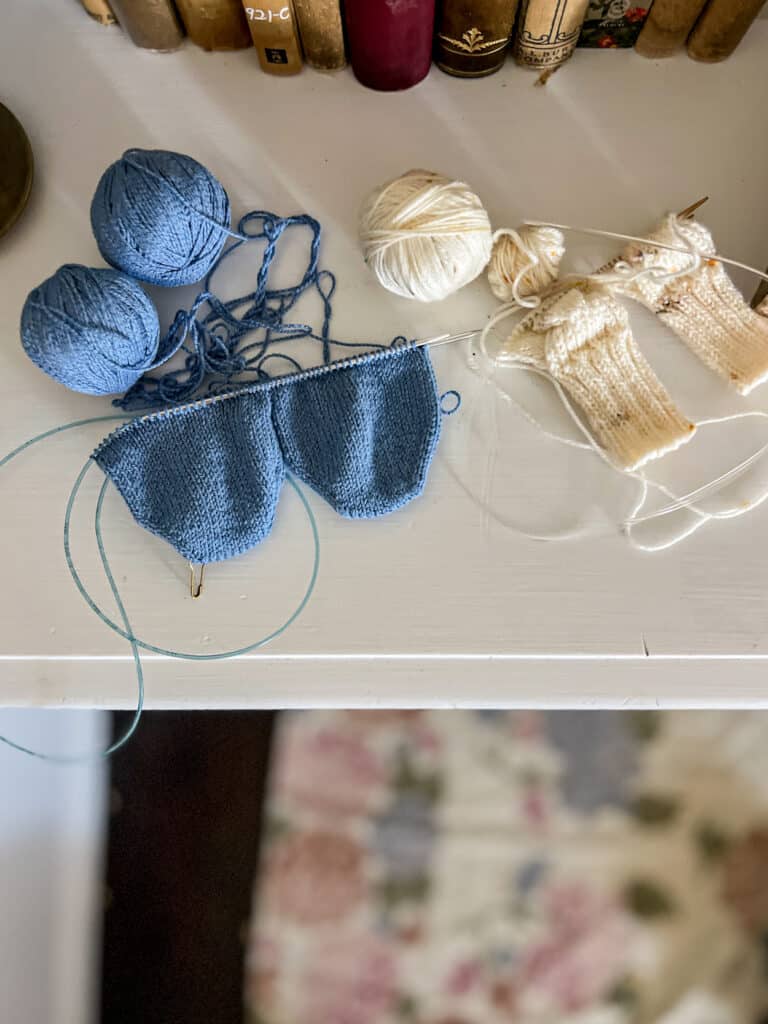
Part Two: TAAT Baby Socks from the Cuffs Down
Which brings us to the recent baby socks. I knit the first pair one-at-a-time, but I used the Magic Loop method because the circumference was so tiny. As I was getting ready to cast on for the second pair, I thought to myself: why not try these two-at-a-time?
So I pulled up a tutorial from Purl Soho and I got to work.
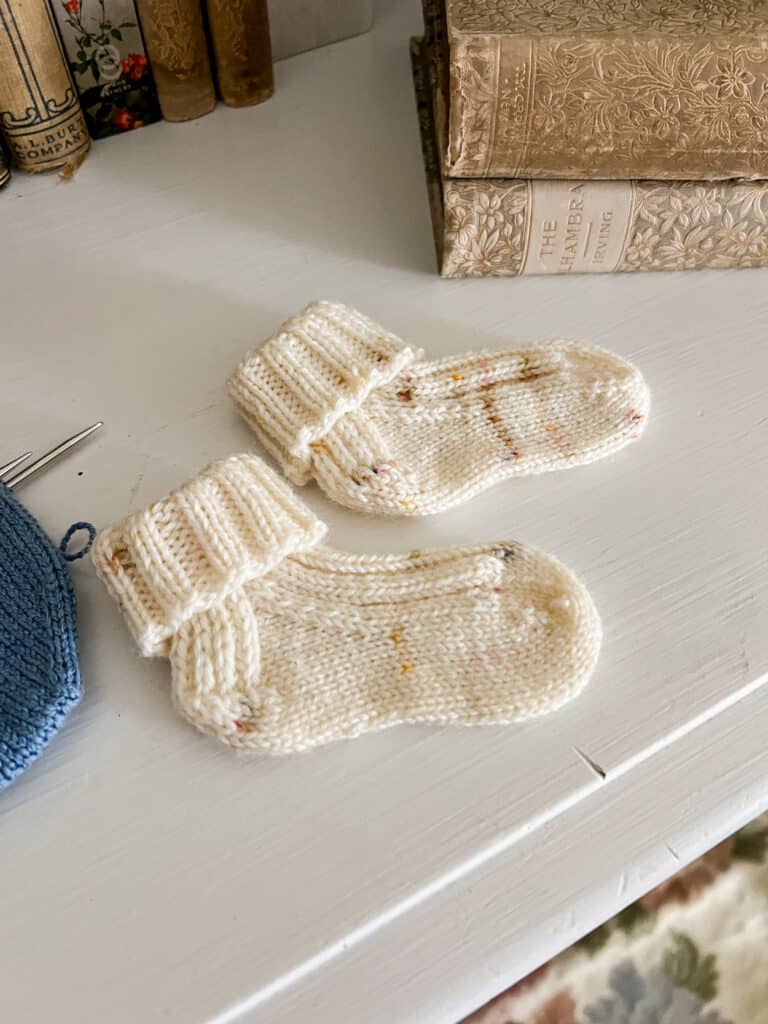
The beginning was, I admit, tricky. I struggled a little with the cast-on process. Things settled into a flow once I figured that out, though, and it went really smoothly from that point onward.
The biggest benefit to this method is that it prevented a problem I ran into earlier. See, with this method, it’s impossible to knit one leg longer than the other. You are almost forced into having perfectly matched socks.
On the other hand, knitting the heels was a bit of a challenge. That’s because I prefer a heel flap and gusset. There must be a specific order for picking up the stitches along the different sides of the heel flaps, but I didn’t manage it on this go-round. It meant that I had to pull some stitches off the needles onto other needles and rearrange things. That was a bit tedious.
Part Three: TAAT Adult Socks from the Toes Up
After I knit the little baby socks, I thought it might be wise to try it out with some adult socks. It turns out I had the perfect project for it. See, I’m in the middle of a project involving testing several non-wool sock yarns, and one of them is a 50g hank. My mid-calf socks usually take about 65g, so the plan is to knit some shorties using this hank of yarn.
It should work out just fine, but I’m a little nervous. I decided it would be a good idea to knit this pair toe-up. That way, I can just knit until I’m almost out of yarn, do the cuffs, and bind off.
But of course, if I knit the socks one-at-a-time, I run the risk of using too much yarn for one sock and not having enough yarn for the other. If I knit them TAAT, I can guarantee they’ll be identical without having to do any unraveling or algebra ahead of time.
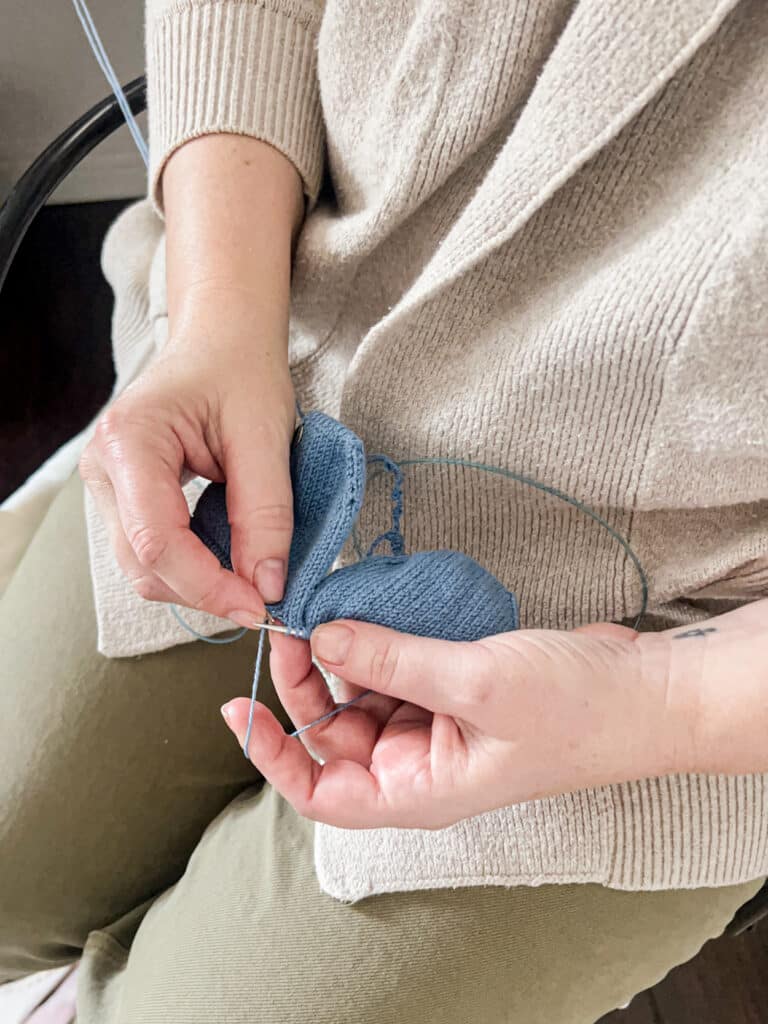
One thing I’ve noticed about knitting toe-up socks with Magic Loop is that the first few rounds are much more comfortable using this method than they are with DPNs. I think that’s because of the flexibility of the cord on the back half of the stitches. Suddenly, it makes sense why so many Magic Loopers like toe-up socks and why so many toe-up sock knitters are also Magic Loopers.
Now, I’m already working on a couple of new or new-ish skills with this pair. To keep things from getting too complicated, I’ve decided to use a short-row heel rather than try to learn how to do a toe-up heel flap and gusset. There is, indeed, a way to do that, but I’ll save that skill for another day.
I promise I’ll keep you posted on how things go!
Let’s stay connected!
Join my newsletter for 30% off all new releases, regular updates with helpful tips and tricks, first crack at registration for upcoming workshops, exclusive discounts, and more.
Prefer to read without ads? Join my Patreon, which starts at just $1 a month!
Join the A Bee In The Bonnet Facebook Group to participate in knitalongs and other fun community events
Come hang out with me on the A Bee In The Bonnet TikTok
Follow along on the A Bee In The Bonnet Instagram
Get inspired via the A Bee In The Bonnet Pinterest

